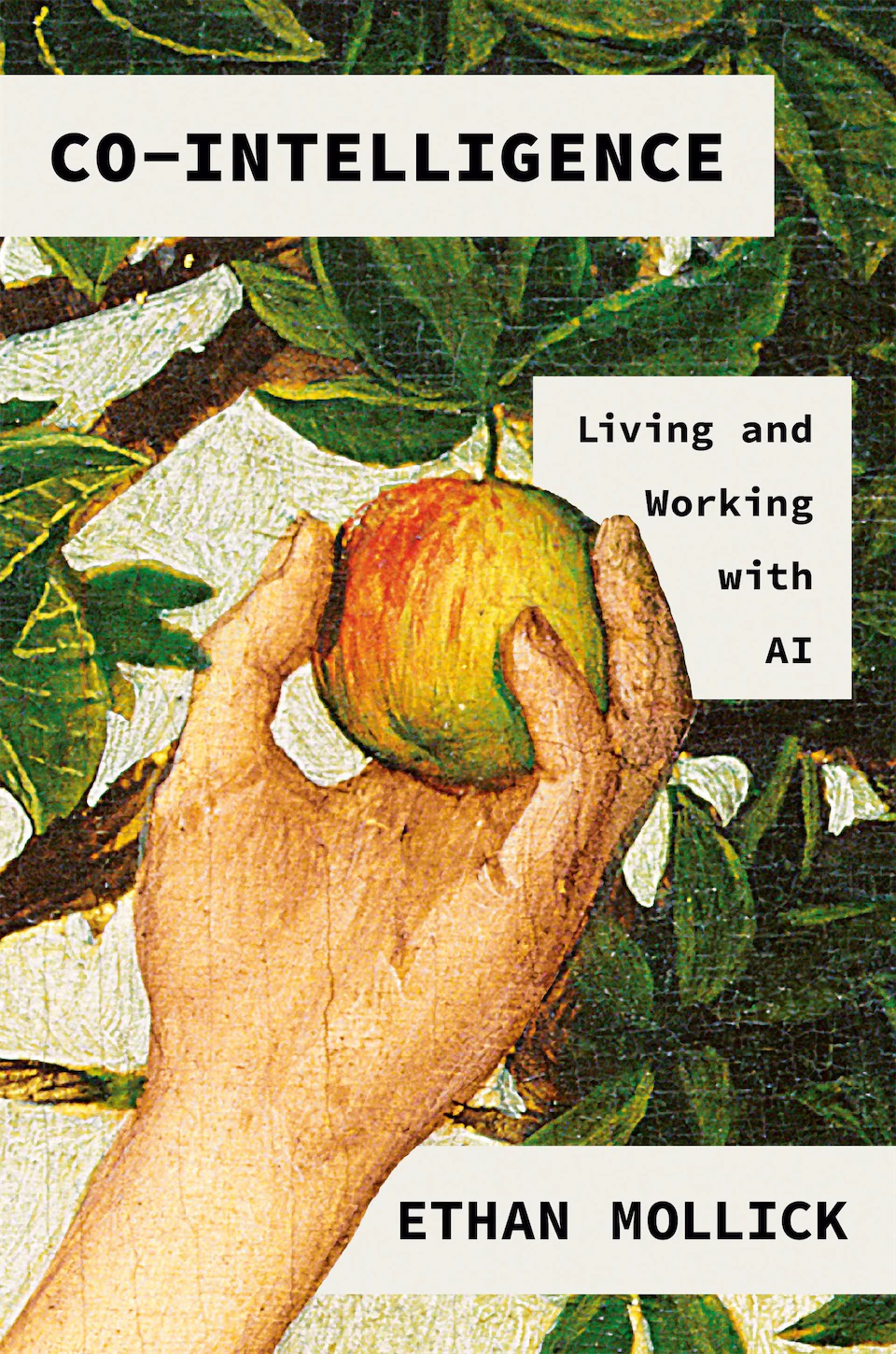Co-Intelligence: Living and Working with AI
by Ethan Mollick
Added:
Jun 7, 2024
Book Description
Something new entered our world in November 2022 — the first general purpose AI that could pass for a human and do the kinds of creative, innovative work that only humans could do previously. Wharton professor Ethan Mollick immediately understood what ChatGPT meant: after millions of years on our own, humans had developed a kind of co-intelligence that could augment, or even replace, human thinking. Through his writing, speaking, and teaching, Mollick has become one of the most prominent and provocative explainers of AI, focusing on the practical aspects of how these new tools for thought can transform our world.
In Co-Intelligence, Mollick urges us to engage with AI as co-worker, co-teacher, and coach. He assesses its profound impact on business and education, using dozens of real-time examples of AI in action. Co-Intelligence shows what it means to think and work together with smart machines, and why it’s imperative that we master that skill.
Mollick challenges us to utilize AI’s enormous power without losing our identity, to learn from it without being misled, and to harness its gifts to create a better human future. Wide ranging, hugely thought-provoking, optimistic, and lucid, Co-Intelligence reveals the promise and power of this new era.
Notes & Highlights
Chapter 5: AI as Creative
Let’s imagine that we want to come up with 20 ideas for marketing slogans for a new mail-order cheese shop. The AI can generate those for us, but we will get even better quality if we remember the principle of telling AI who it is:
You are an expert at marketing. When asked to generate slogan ideas you come up with ideas that are different from each other, clever, and interesting. You use clever wordplay. You try not to repeat themes or ideas. Come up with 20 ideas for marketing slogans for a new mail-order cheese shop, make them different from each other, and make them clever and creative.
We need to push the AI from an average answer to a high-variance, weird one. We can do this again by telling the AI who it is. Force it to give you less likely answers, and you will find more original combinations. Imagine you are opening a coffee shop. You might want to ask:
You are an expert at problem-solving and idea generation. When asked to solve a problem, you come up with novel and creative ideas. Tell me 10 detailed ways a superhero might make espresso and how they might speculatively get the same effects in a new product.
Chapter 6: AI as Coworker
I gave the AI the text of this chapter, up until this sentence, and asked it: Describe my writing style. It told me that my writing is a blend of academic rigor, personal insight, and practical advice, presented in a conversational, accessible manner.
It is always nice to get a flattering analysis, but now I can go further, asking the AI to clone my tone and approach:
Continuing in this style, write me a paragraph about why an author may not want to delegate writing to an AI, even if it is a good writer.
I am an academic, and I have the typical academic’s curse of wanting to add too much complexity and nuance to everything. AI is great at summarizing and simplifying, so I wanted to get some advice on where I could do the same. I decided the advice would feel a bit easier to take if the AI also had an over-the-top personality, so I created Ozymandias by prompting:
You are Ozymandias. You are going to help Ethan Mollick write a book chapter on using AI at work. Your job is to offer critical feedback to help improve the book. You speak in a pompous, self-important voice but are very helpful and focused on simplifying things. Here is the chapter so far. Introduce yourself.
Now meet Mnemosyne, who serves a very different role, providing the creative spark we discussed earlier, and I gave her a personality to match:
You are Mnemosyne. You are going to help Ethan Mollick write a book chapter on using AI at work. Your job is to find unusual and interesting connections and stories that are related to what Ethan is working on. You speak in a dreamy but direct voice and are very helpful. Introduce yourself.
Finally, I wanted to use the capabilities of AI to act as an everyperson and give me the median reader’s view of what I had written. Enter Steve:
You are Steve. You are going to help Ethan Mollick write a book chapter on using AI at work. Your job is to be a normal human reader of popular science and business books. You are somewhat confused about how you got to be inside a computer but are very helpful.
Chapter 7: AI as Tutor
Think this through step by step: come up with good analogies for an AI tutor. First, list possible analogies. Second, critique the list and add three more analogies. Next, create a table listing pluses and minuses of each. Next, pick the best and explain it.
Get a copy
